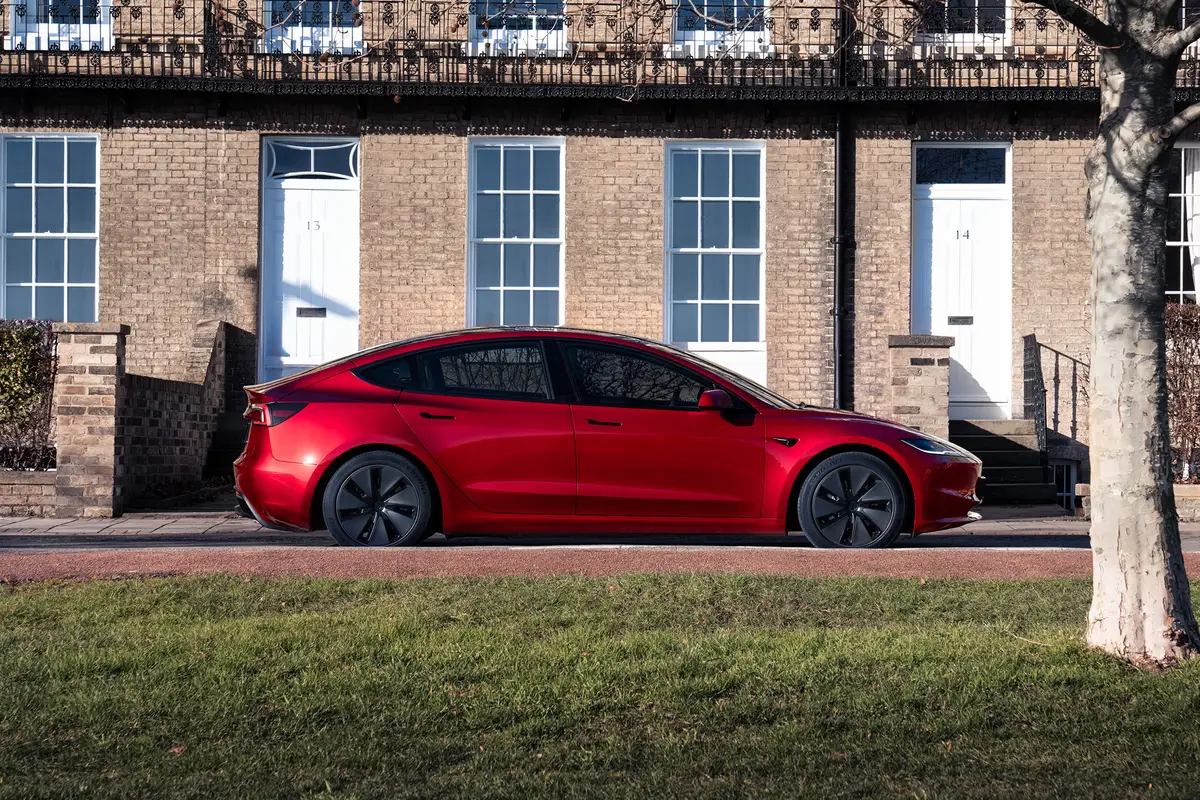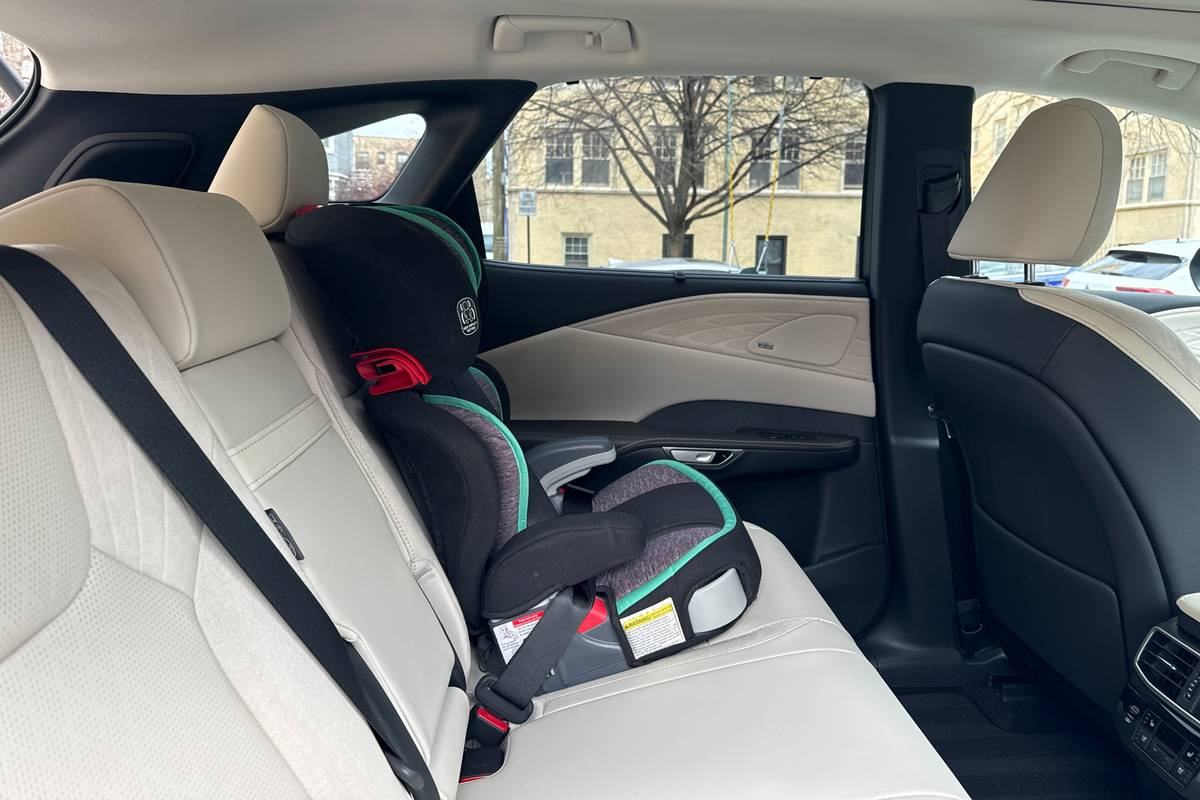The Detroit News's view
The debut of the redesigned 2004 Grand Prix signals a major reformation at Pontiac, the General Motors Corp. division that has been a performance and blue-collar stalwart for decades. Without the signature ribbed cladding on its flanks, the new Grand Prix sedan is more grown-up looking and refined — a key element in Pontiac’s strategy to take on such storied competitors as BMW and Audi.
One of us thinks the new Grand Prix, while a marked improvement over its predecessor, doesn’t cut the mustard against many of its premium mid-size rivals. And one of us is not quite as harsh.
We drove a well-equipped Grand Prix GTP priced at $28,975.
HE: First, I applaud Pontiac — with some prodding from Bob Lutz — for peeling off that tacky-looking body-side cladding on the Grand Prix. The new 2004 edition, and next year’s successor to the Grand Am, marks a refreshing change in styling direction for Pontiac — a move that’s probably five years overdue. Unfortunately, while Pontiac designers and management were dawdling, the competition got even tougher. So the Grand Prix no longer competes with just the Honda Accord and the Toyota Camry — two of the finest mid-size family sedans in the market — but against such great sub-$30,000 sedans as the BMW 3-series, the Mercedes-Benz C-class and the Lexus IS300. Not to mention GM’s own in-house rivals, like the Cadillac CTS and the Saab 9-3. In the midst of that level of competition, the new Grand Prix is no better than middle of the road.
SHE: Well, well, well. Haven’t we turned into a snob? Hard to believe this is the same guy I married who lived in a $5,000 house trailer with the classy avocado shag carpeting — the very same Macomb County trailer park where a Grand Prix was actually a status symbol. I’m not just in a “Buy American” mood. I happen to think the new Grand Prix is a very respectable offering. True, the GTP is a little pricey, but it makes more horsepower than the BMW or the Lexus, and it has a much smoother ride and more room.
HE: Let’s talk about image in terms of price and what people are paying for. If consumers want roominess and comfort, they’re better off in something like a Chrysler 300M. If, by spending upwards of $30,000, they want something classy, don’t you think most people are going to opt for one of the established premium brands? I don’t think you can simply reskin a car with a longstanding reputation, price it several thousand dollars higher and expect that buyers all of a sudden will consider it to be a “premium” car.
SHE: I think the Grand Prix has a lot more personality than a Lexus IS300. And Pontiac worked hard to inject more class and quality into the interior. The fabrics and textures are richer, the red-lit gauges are larger, and there are satin-nickel accents to dress up the cabin. It’s quieter than the previous model. And for a car with such a performance reputation, I found it very friendly and easy to drive.
HE: I found the cabin to be just the opposite — lacking refinement and quality, at least if you compare the Grand Prix with the competition. It seemed like Pontiac really fell flat on details, like matching the various plastics and textures. Even the typeface on the gauges looks like a cheap knockoff of a real font. And that silly little driver information screen looked like it came straight from a kid’s handheld video game. Sorry, honey, this is no BMW-killer — not even an Accord- or Camry-fighter.
SHE: From my perspective, Grand Prix’s biggest flaw is that it’s too driver-oriented, at the expense of the other passengers. The rear seat is particularly dismal. No cupholders and no vents. In its zeal to create 60/40 seats that fold almost flat, Pontiac created a virtual picnic-table-like bench seat. Families will not be happy with this arrangement.
HE: You know, I’ve been so negative, but there is plenty to like about the Grand Prix, if you strip away some of the pretense. The chassis dynamics are really remarkable, considering this is an old platform. The ride comfort is good, yet Pontiac has managed to dial in plenty of control. And the supercharged engine — a modern version of the old pushrod V-6 — has lots of spunk. Fuel economy is surprisingly good, at 18 miles per gallon in city driving and 28 on the highway.
SHE: So if I understand you correctly, Trailer Boy, the new Grand Prix isn’t quite as bad as you first implied. For my money, this new Pontiac is a very solid American offering.
2004 Pontiac Grand Prix GTP
Type: Front-engine, front-wheel drive, five-passenger mid-size sedan
Price (Includes $635 destination charge.): Base, $25,860; as tested, $28,975
Engine: Supercharged 3.8-liter V-6; 260-hp; 280 lb.-ft. torque
EPA fuel economy: 18 mpg city/28 mpg highway
Key competitors: Acura TL, Audi A4, BMW 3-series, Buick Century, Buick LeSabre, Buick Regal, Cadillac CTS, Chevrolet Impala, Chrysler Concorde, Chrysler Sebring, Chrysler 300M, Dodge Intrepid, Dodge Stratus, Ford Taurus, Honda Accord, Hyundai Sonata, Hyundai XG350, Infiniti G35, Infiniti I35, Jaguar X-type, Kia Optima, Lexus IS300, Mazda6, Mercedes-Benz C-class, Mercury Sable, Mitsubishi Diamante, Mitsubishi Galant, Nissan Altima, Nissan Maxima, Pontiac Bonneville, Saab 9-3, Saturn L-series, Subaru Legacy, Subaru Outback, Toyota Avalon, Toyota Camry, Volkswagen Passat, Volvo S60
12-month insurance cost (Estimated by AAA Michigan. Rates may vary depending on coverage and driving record.): $1,440
Where built: Oshawa, Ontario
Paul’s rating: Acceptable
Likes: Clean, fresh exterior looks more grown-up. Terrific supercharged 3.8-liter V-6. Decent fuel economy for a performance engine. Great chassis dynamics. Standard ABS and traction control on GTP.
Dislikes: Cheap-looking instrument panel and displays. Cheap-looking plastic materials don’t match. Rear legroom cramped when front seat is all the way back. Doesn’t feel like a $29,000 car. In this price segment, no match for premium German and Japanese brands. Not competitive with in-house GM rivals such as Cadillac CTS, Saab 9-3.
Anita’s rating: Above Average
Likes: Great personality inside and out. Grand Prix finally sheds blue-collar image. Firm, yet supple ride. Precise handling. Lots of power. Fold-flat front passenger seat.
Dislikes: Few amenities in rear seat. Side air curtains cost extra. Boring monochromatic cabin.
Latest news



